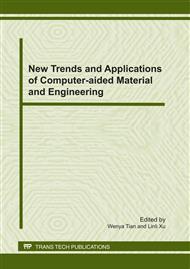p.146
p.151
p.156
p.161
p.165
p.170
p.176
p.180
p.185
Elasticity Analysis Modeling by Least Squares Support Vector Machines Applied to System Load
Abstract:
Load elasticity analysis is effective for quantitative dynamic analysis on the load volatility in electric power planning. However traditional linear methods are always based on the definite mathematical or physical models of the observed problem, which is not suitable for the complicated real cases, especially electric load. So this paper describes a novel model for the elasticity analysis on the electric load. First to overcome the limitations of traditional regression methods, load simulation model are proposed by LS-SVM that is a strong nonlinear regression tool and outperforms standard support vector machine in the regression accuracy and modeling velocity. Based on that model, numerical simulation is performed to simulate the changes in load and its influence factors in consistency with the latent mapping relationship. Then electric load sensitivity models are deduced. Finally, the case studies are used to test the proposed model.
Info:
Periodical:
Pages:
165-169
Citation:
Online since:
January 2011
Price:
Сopyright:
© 2011 Trans Tech Publications Ltd. All Rights Reserved
Share:
Citation:


